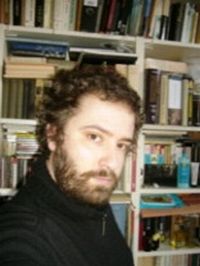Márton Szentpéteri, born in Budapest, Hungary, in 1973. Ph.D. from Eötvös Loránd University, Budapest. Research Fellow at the Institute for Literary Studies of the Hungarian Academy of Sciences, Budapest. Assistant Professor in Design Theory and Cultural Studies at the Moholy-Nagy University of Art and Design, Budapest.
Mellon Fellow (1 September 2006 – 31 January 2007)
JÁNOS APÁCZAI CSERE IN THE NETHERLANDS (1648-1653)
I completed an article with text editions on a hitherto unknown methodological work by Alsted entitled Hortulus artis inventivae suis areolis distinctus. I compared the Herborn way of encyclopaedic meditation strongly dependent on Lullist combinatoria and Christian Cabbala to the Cartesian philosophical meditation. In November and December 2006, I prepared an article discussing the Herborn model of the theory of cognition and that of Apáczai Csere. As a result, I could claim that the major difference between the Herborners and Apáczai lies in the separation of the realms of faith and reason. Whereas Alsted – and in his footsteps, Bisterfeld, Comenius and Porcsalmi – based their theory of cognition on the three interrelated fundaments of experience, right reason and the Holy Writ in a typically Trinitarian fashion, Apáczai gradually admitted the Cartesian use of the exegetical principle of ‘accommodatio’ that separates knowledge deriving from the book of nature and the Bible. In January 2007, I prepared a part of a longer chapter on Apáczai Csere’s inaugural speech at Alba Julia, delivered in 1653 and later published as an appendix to the Magyar Encyclopaedia. The paper I drafted deals with that section of the Oratio de studio sapientiae which discusses the general history of wisdom. As a result, I could conclude that Apáczai’s account of the history of ‘sapientia’ – the first of its kind in Hungarian intellectual history – was born in the context of the 17th-century tradition of ‘historia philosophica’ in the Low Countries embodied in the works of A. Heereboord, G. Horn and G. J. Vossius.
